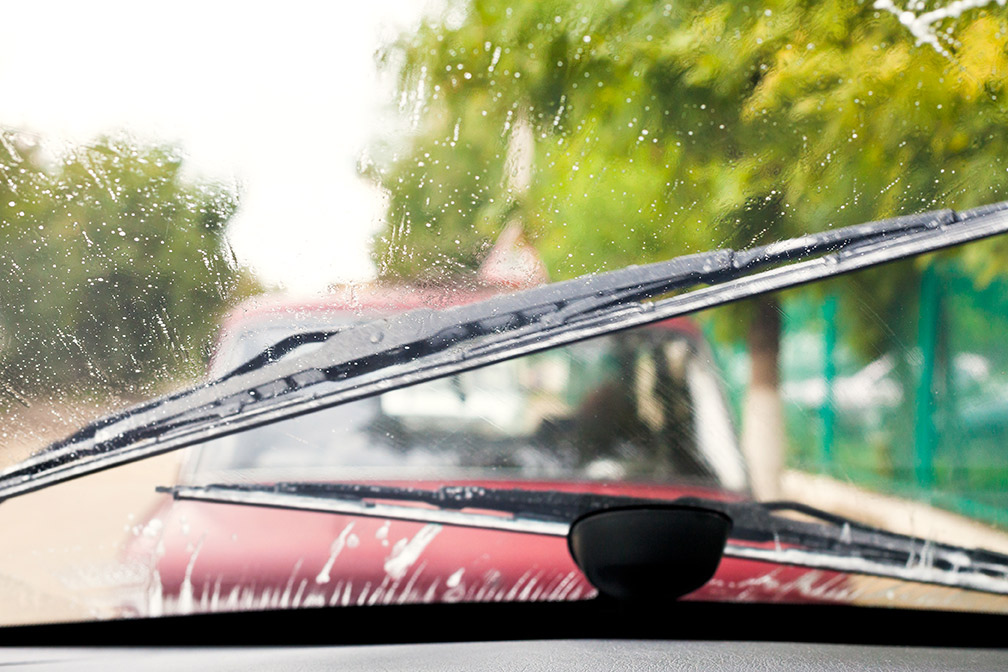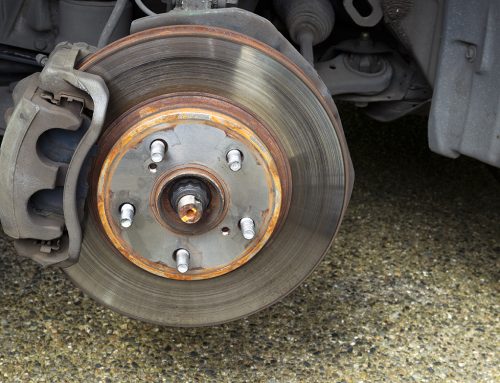Shake Away Those Winter Blues . . . Spring Clean Your Ride
As a resident of western Pennsylvania, you are certainly no stranger to hard winters. Plummeting temperatures, unpredictable snow showers and constantly salted roads can all have a negative impact on the appearance and performance of your vehicle.
No doubt, those icy roads and cold temperatures can really test your vehicle . . . and spring is a great time to deal with the wear and tear created by Ol’ Man Winter.
In fact, the Car Care Council likes to remind motorists that spring is the perfect time to make sure your vehicle is ready for the upcoming travel season.
Lest you forgot, most of April around Pittsburgh was more winter-like than spring, so now’s the time to get going.
Following is a look at some of the ways you can prepare your car for the spring/summer driving season.
Let’s Begin on the Outside
Wiper blades: As you know, it rains a lot in the spring/summer in our region and you don’t want to be stuck driving in a downpour with damaged or worn-out wiper blades. The winter can crack and damage blades, so it’s usually a great idea to change them in the spring.
It’s also a good idea to check and replace your washer fluid. There’s nothing worse than a nasty, sticky or otherwise polluted fluid gunking up your vehicle’s windshield!
There’s a Reason the “Rust Belt” Exists
The road salt brine has been sprayed all over the exterior of your vehicle for how long?
If left unattended, most types of road salt will slowly eat away at your vehicle’s body, setting the perfect table for a very unwelcomed guest – rust.
In February, 2017, AAA released a new study showing drivers across the U.S. paid around $3 billion annually in repairs due to rust damage caused by road deicers. While a welcome addition to our roadways in terms of safety, these harsh chemicals can cause permanent damage to your vehicle.
Unfortunately, most drivers mistakenly believe that salt stops being a problem once it dries simply because moisture is the active ingredient for a corrosive reaction. This is not true, as the moisture in the air (humidity) is enough to keep the salt eating away.
Make sure you give your vehicle a good hand-washing this spring. Carefully inspect the condition of your vehicle’s paint job and make note of any chips, dings or scratches that can easily be remedied by purchasing touch-up paint. If left untouched, a ding, chip or scratch can cause rust that may spread over time. Most new car dealers, as well as several auto parts shops, have small bottles of paint for the vehicles they sell/service that are well suited for touch-ups.
Wax on, winter off. You should also replenish and protect your vehicle’s paint job by applying a generous coat of wax.
Tip: For you DIYers, soft, quality wash mitts or cloths are key to making sure you do not damage your vehicle’s paint job. When it comes to soap, invest in trusted brands made specifically for a vehicle wash. Dishwashing detergents could strip your vehicle of its protective coating.
Don’t forget the interior. Although your vehicle’s exterior takes the brunt of the punishment doled out by the winter, the weather has a way of damaging the interior of your vehicle as well. From simply getting into and out of your vehicle, you can introduce salty water, which can collect on the floor. As a result, rust could be forming where you can’t see it.
Let’s face it, nobody wants to spend time cleaning out their car during a cold winter day. That’s why spring is the perfect time to clean hour car’s interior, so spend part of a day doing some serious interior spring cleaning.
Tip: Melting snow can seep through floor mats into small crevices. When the water freezes again, it can expand and create cracks. Pull up the mats and look for any damage your vehicle may have incurred over the winter.
Think of detailing as a spa treatment for your vehicle
You might also want to consider detailing your vehicle in the spring. Fact is, experts recommend that you have your vehicle detailed every six months or so to maintain your vehicle’s finish.
And when it comes to interior detailing, nothing beats an auto detailing service. Detailing experts use a combination of steam cleaners, vacuums and brushes to give your car’s interior a deep clean that you might not be able to do on your own.
Simply stated, auto detailing is the practice of making a car look it best, without relying on extreme measures such as dismantling or repairing.
See the detailing experts at DoubleTake Auto for complete information.
Take into Account Where the Rubber Meets the Road
It’s spring, so if you’ve used winter tires, it’s time to replace them with the summer ones. Winter tires do not perform well in warm conditions.
If you use all-season tires, make sure the tread of the tires is not worn off. Check the depth of the tread as well as the tire pressure. It’s also a good idea to rotate your all-season tires at this time, if you haven’t done so in a while.
Weather changes affect tire pressure and that can lead to premature wear and reduced handling. Uneven pressure can also cause various problems in your vehicle’s directional control, uneven wear across the tires, and even make them more prone to blowouts.
Proper tire inflation and tread depth help insure comfort, traction and handling as well as help maintaining fuel efficiency. Tires are a key safety feature and one of the most important on your vehicle.
It’s also quite common to feel your wheel vibrate this time of year. A high-pressure car wash will remove much of the road grit, dirt, stones and sand that will gather in your rims during the winter and harden over time, causing your vehicle to behave strangely when driving. Most wheels are balanced to within a quarter inch of an ounce, so think about the effect of several ounces of that caked-in mud can have on your drive.
Tip: Wintry conditions cover your brakes with a brine of salt and grime, which can cause binding and premature wear. A seasonal brake check will determine if your brakes are performing well.
Potholes Are Snow Joke
Tires are meant to be the only part of your vehicle that touches the road, so it isn’t surprising they’re susceptible to pothole damage like sidewall bulges, tread separation or flats. You may be able to repair a blown-out tire, but a tire with a sidewall bubble or separated tread needs replaced right away.
Tip: You should check for splitting and large bumps in the sidewalls. Many times, damage is on the inner sidewall, not evident at initial inspection
Nasty potholes also wreak havoc on wheel alignment. If you feel your vehicle tilting to one side or the other while driving with your steering wheel centered, your wheels are not properly aligned. An alignment will ensure safety and prevent your tires from unevenly wearing out.
Tip: Just because you don’t notice it pulling doesn’t mean your alignment is within spec. Your car can be out of alignment and not pull, but uneven tire wear can still occur and reduce handling.
Check your suspension, too. When a vehicle drives over a pothole, the initial force on the tire is transferred to the components of the suspension system (springs, shock absorbers, linkages, etc.). Repeated jolts caused by potholes quicken wear and tear on your suspension, while reducing its performance.
Inspect the shocks and struts for signs of physical damage, such as leaking, rusting or dents. Also, be aware of the warning signs that you may need to replace them: vehicle rolls or sways on turns, front end dives when braking, rear end squats when accelerating, vehicle sits lower in the front or rear and the vehicle bounces or slides on a winding and rough road.
Since exhaust pipes run along the undercarriage of a vehicle, they’re a perfect target for potholes lurking in the road. Deep potholes can cause a vehicle to bottom out and scrape the undercarriage against the pavement, potentially ripping a hole in the pipes, muffler or catalytic converter.
The good news: Most potholes aren’t big or deep enough to pose a threat to your vehicle. With properly inflated tires and aligned suspension, chances are it will roll right through them. But, as seasons change and potholes grow, stay alert and avoid them as best you can.
Before we leave the undercarriage
Besides your tires, your vehicle’s undercarriage is probably most exposed to damaging winter elements. A recently washed and waxed vehicle might look great, but too often people don’t take a good look at what’s going on under their vehicle.
There’s a lot of moving parts down there and you want to be sure they’re well lubricated and free of corrosive substances.
Tip: When you’re ready to have the winter’s accumulation of salt removed, try to find a car wash that sprays under the vehicle.
Take a Peek Under the Hood
Next, do a thorough check under the hood to make sure your vehicle’s engine made it through the winter unscathed.
Engine air filter: Your vehicle’s air filter helps clean the air that passes through the engine area. Through the winter months, it can pick up and become inhibited by moisture, sludge and dirt. You should replace your air filter with the change of seasons.
Check all fluids: There a number of fluids that require attention, including engine oil, power steering fluid, brake and transmission fluids and antifreeze/coolant. Antifreeze has rust inhibitors built into it, but over time, they can begin to break down into acid that eats away at hoses, seals and components. Summer is always harder on your cooling system, so a cooling system that worked fine throughout winter may not be able to handle the upcoming warmer months. Check your owner’s manual for intervals to replace your antifreeze.
Batteries, plugs and wires: During the colder months, these parts work overtime to ensure that your vehicle runs smoothly. Look at the battery for excessive signs of corrosion. Remember, your battery is quite literally the heart of your vehicle. A tiny bit of rust or discoloration is probably okay, but a lot may mean that melted snow or other liquids have damaged the battery’s exterior. Better to replace a damaged battery now than have your vehicle die when you’re in traffic.
If you’ve been having trouble starting your vehicle or it’s less than responsive when you accelerate, it’s time to check the plugs, too.
Belts and hoses: Cold weather can impact the functioning of belts and hoses, so it’s important to have them checked in the spring for signs of wear. Rule of thumb: These parts should be replaced if they are more than five years old.
Tip: If you aren’t comfortable performing these checks on your own, contact a local mechanic.
Winter can be a hard season for us and our vehicles. It got you through the winter weather, so give your vehicle some spring cleaning as a thank you.
We’d be happy to share some more tips with you and to give your car a look, both inside and out, to make sure it’s ready to roll into the warmer weather.
Just contact the car care professionals at DoubleTake Auto.






